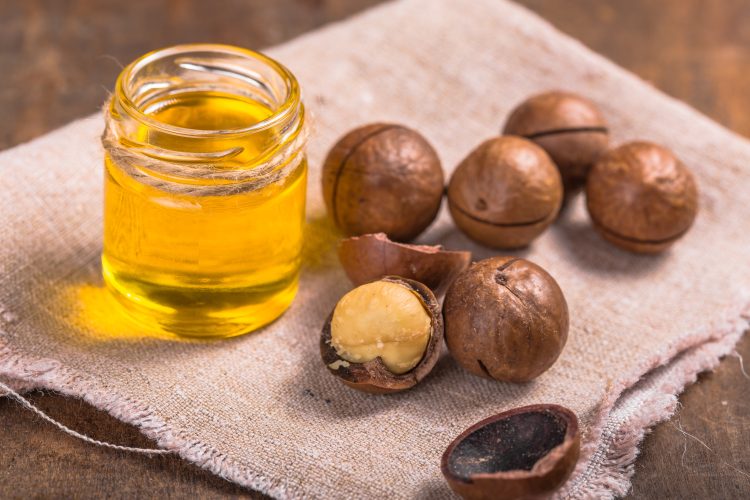Macadamia’s magic moment: an on-trend nut for healthy new foods
- Like
- Digg
- Del
- Tumblr
- VKontakte
- Buffer
- Love This
- Odnoklassniki
- Meneame
- Blogger
- Amazon
- Yahoo Mail
- Gmail
- AOL
- Newsvine
- HackerNews
- Evernote
- MySpace
- Mail.ru
- Viadeo
- Line
- Comments
- Yummly
- SMS
- Viber
- Telegram
- Subscribe
- Skype
- Facebook Messenger
- Kakao
- LiveJournal
- Yammer
- Edgar
- Fintel
- Mix
- Instapaper
- Copy Link
Posted: 14 June 2023 | Denise Canellos, Denise Webster, Jillian Laing | No comments yet
Why the sudden discourse about macadamias? Colleagues from the World Macadamia Organisation (WMO) explain why the time is ripe for consuming more of these prized fruits.


Why the sudden discourse about macadamias? Colleagues from the World Macadamia Organisation (WMO) explain why the time is ripe for consuming more of these prized fruits.
It is macadamia’s magic moment. What once was a boutique and gourmet nut is now being touted as a ‘foundational food for everyday enjoyment.’ Recent awareness of the nuts’ myriad health benefits has given the industry – businesses and consumers alike – a deeper appreciation for them. Alongside their functional attributes, increased accessibility makes them an obvious choice for healthy product developers and snackers too.
Science behind the magic?
Let’s begin with a deep dive into the published science about the health-related traits of macadamias.
Nuts are known to be healthy and macadamia nuts stand out as an excellent source of essential good fats that are beneficial for overall health.
Macadamia nuts contain the highest levels of monounsaturated fats compared to all other tree nuts. Monounsaturated fats (MUFA), in the form of Omega-7 and 9, are associated with health outcomes such as reduced inflammation, healthier heart function, and overall wellness. MUFAs can also be found in foods such as olive oil, avocados and sunflower seeds. They are important in our diets because oleic acid – the most common fatty acid in the blood – is known to help lower total cholesterol and low-density lipoprotein (LDL), aka ‘bad cholesterol’ levels without lowering high-density lipoprotein (HDL), aka ‘good cholesterol’, levels.
Polyunsaturated fats (PUFAs) are also key good fats in our diet in the form of Omega-3 and 6. However, the average ratio of Omega-6 to Omega-3 fat consumed in the American diet is about 20:1 which leans too high on Omega-6. The ideal ratio is around 5:1 of Omega-6 to Omega-3. Fortunately for macadamia nuts, they have a ratio of 6:1, which is a perfect balance.
There is also evidence that MUFA and PUFA fats, like those in macadamia nuts, may provide protection of brain and cognitive function. Brains are 60 percent fat, and the fat consumed determines the type of fats that are available for the brain to use. These good fats may lead to healthier brains.
The good news story doesn’t stop there. Macadamia nuts offer a wide range of nutrients including essential vitamins and minerals such as dietary fibre, protein, manganese, thiamin, copper, magnesium and selenium. Thiamin (B1) helps generate energy, keeps nerve cells healthy, and supports mood. Copper and iron are necessary for healthy red blood cells and magnesium is essential for over 300 enzymes to function properly and to build strong bones and teeth. Selenium is a potent antioxidant, necessary for healthy thyroid function.
Time for a packaging rethink?
With such evidence of their nutritional value, it is only fitting for macadamia nuts to be labelled as “heart-healthy” in packaging and otherwise. The nuts’ cholesterol-lowering effects lowers the risk of heart disease and stroke. Furthermore, the nutritional benefits of macadamias have long been supported by scientific studies and qualified regulatory claims that allow products to be developed with overall wellness for the consumer.
The biggest barriers that have prevented formulators from including macadamia in products in the past has been security of supply and impact on the cost of final products. Over the last year, however, the market has changed and supply has increased significantly.
In this decade, macadamia growth will increase exponentially. The 2022 macadamia production was 298,914 tonnes (nut in shell at 3.5 percent moisture) and it is estimated that production will exceed 660,000 tonnes by 2030. A key contributor to this increase is that fields for crops such as tobacco, sugarcane and coffee are being replaced with macadamia trees.
The good news for formulators is that macadamia nuts are supplied in many different forms – classified into styles ranging from zero to eight and from whole nuts to fine meal, helping to create different options for production. For example, macadamia oil is becoming popular for culinary artists and beauty experts.
With evidence to support the importance of the nut, it is only fitting that interest in macadamias starts to now align with consumer trends and a significant upturn in availability, affording flexibility for formulators to use them in new food products.
About the authors
Jillian Laing is Chief Executive Officer at the World Macadamia Organisation.
Denise Canellos MS, CNS is an executive consultant for major food brands.
Denise Webster is a leading food scientist and sought after specialist in the food industry.









